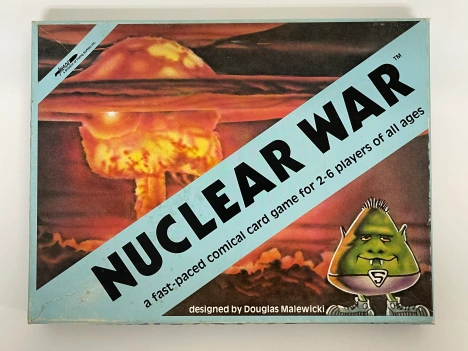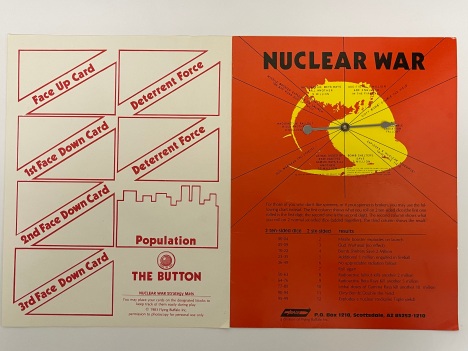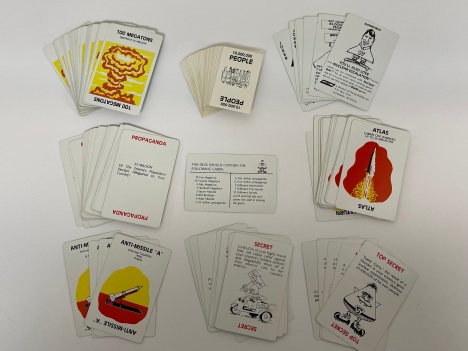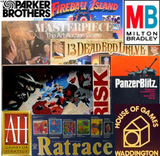Ever searched the Internet looking for what exactly you were missing from the old board game you pulled from your closet, only to find no succor in your time of need? Well, stop that fruitless searching through endless google results, as this week we look at the 1983 version of Douglas Malewicki’s classic game of mass destruction, Nuclear War.
Nuclear War started it’s bombing run in 1965, and has seen many new editions (and expansions) since, but each keeps that 1960’s Cold War paranoia and panic vibe alive.
Should you find a copy in a thrift shop or on eBay, below is a guide to the game’s contents you can use to decide if you want to make that purchase! Included are:
- The Game Box (featuring a marvelous image of the the Super Virus and a successful nuke)
- The Spinner (which includes a dice-rolling option if the Spinner no longer functions)
- 2 Strategy Maps (with spots for the Face Up Card, 1st Face Down Card, 2nd Face Down Card, 3rd Face Down Card, Population, and 2 Deterrent Force spots – as well as “The Button” with “Press to Test”)
- A deck of Population Cards (40 total)
- Ten 1,000,000 People Cards
- Ten 2,000,000 People Cards
- Ten 5,000,000 People Cards
- Six 10,000,000 People Cards
- Four 25,000,000 People Cards
- A deck of Nuclear War Cards (99 total)
- 19 Ten Megatons Cards
- 10 Twenty Megatons Cards
- 4 Fifty Megatons Cards
- 1 One Hundred Megatons Card
- 3 Saturn Missiles Cards
- 6 B70 Bombers Cards
- 9 Atlas Missiles Cards
- Two 25 Million Propaganda Cards
- Six 10 Million Propaganda Cards
- Twelve 5 Million Propaganda Cards
- Four different Anti-Missile Cards
- Five different Top Secret Cards
- Ten different Secret Cards
- Two Joker Cards (not used for gameplay, showing how to get a catalog for more games)
- Three Blank Cards (make your own card!)
- Two Product Ad Cards (not for gameplay)
- One Card showing the contents of the game
- A Blade (division of Flying Buffalo, Inc.) product catalog
- The Game Rules
That’s it!
Filed under: Board Games, What's In That Game? | Tagged: board game, Board Games, card game, Nuclear War, retro game | Leave a comment »

























